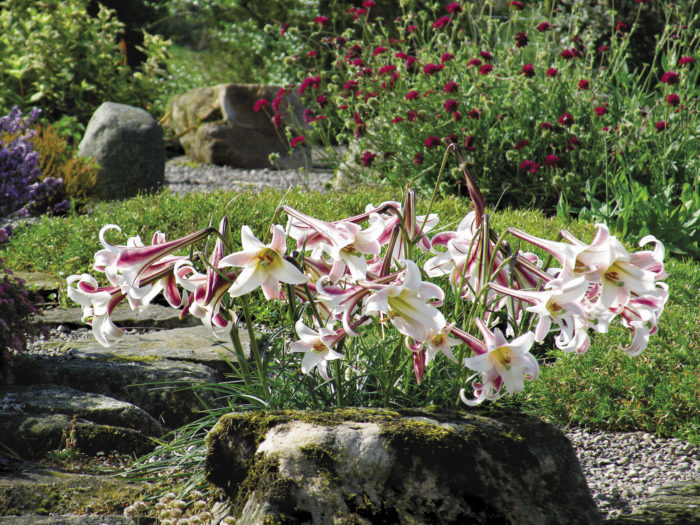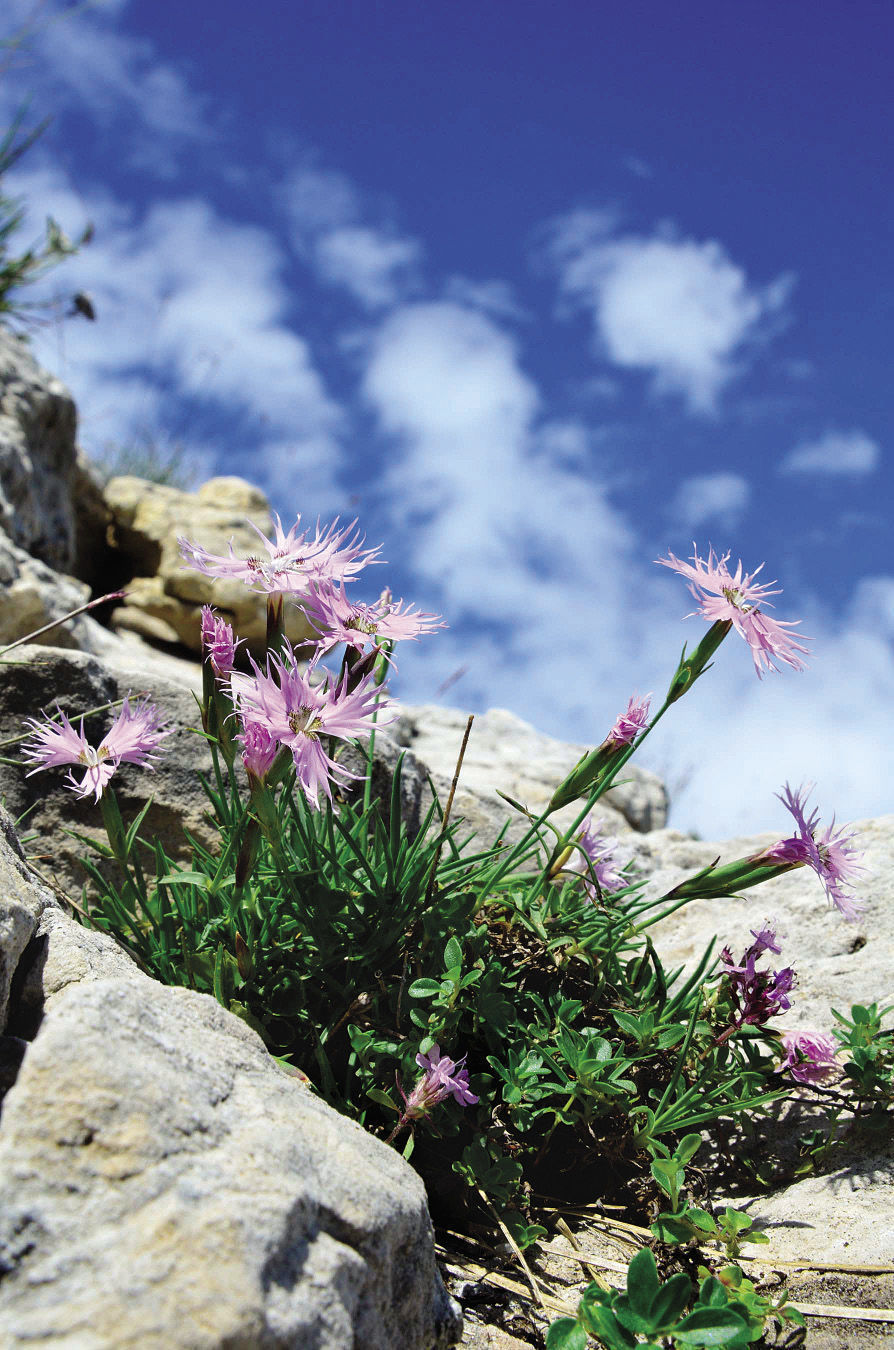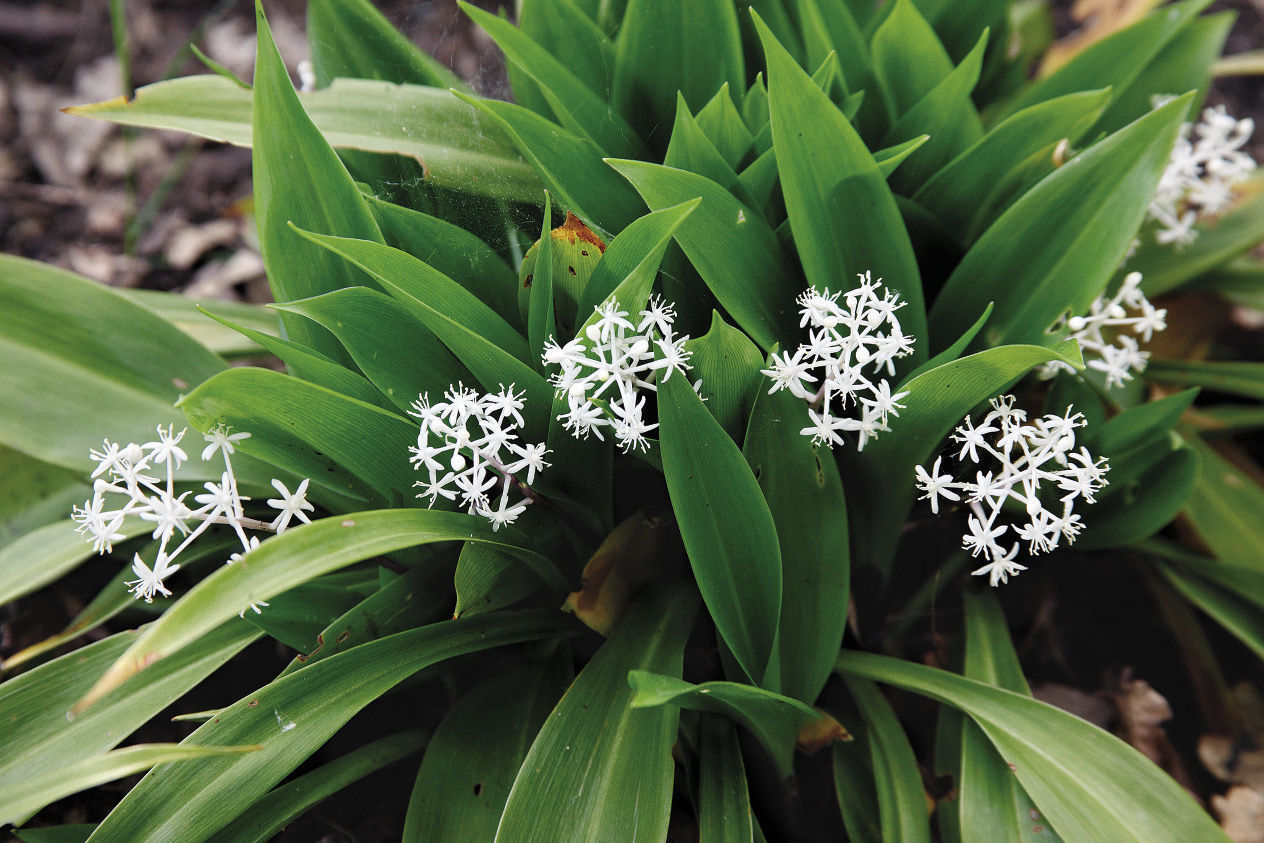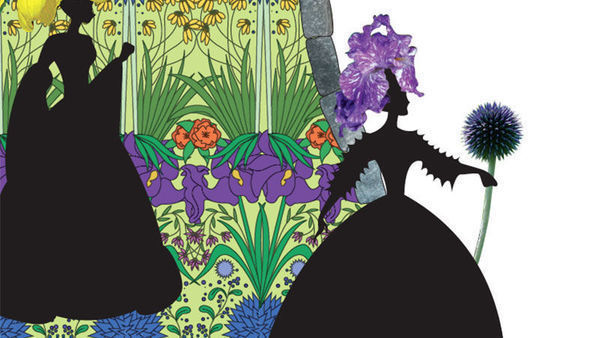
A few years ago, I was walking with a friend through a wonderful rose garden and pointed out one of my favorite varieties: the old–fashioned rose ‘Madame Ernest Calvat’, which boasts a rich, exotic, spicy fragrance. “You’ve got to smell this,” I said. She bent close and took a deep breath, was silent a long moment, then said, “Wow. That . . . that really takes you places, doesn’t it?” That is the power of fragrance. Scent, more than any of the other senses, really does have the power to take you places—whether it’s a new flower that carries you off to an exotic unknown land or a familiar and beloved lilac or lily that transports you instantly to a grandparent’s garden. A garden full of scents is emotionally evocative and will linger in the memories of you and your visitors.
Learn more: Fragrant Houseplants
I always have my old favorites, like lilies and lilacs, in my gardens, as well as marigolds, whose sharp scent makes me instantly five years old again, saying good-bye to my plants before my first day of kindergarten. But I also love including new and different fragrant plants—fresh scents that beckon to new adventures and places to explore. Fragrance, unfortunately, gets short shrift in a lot of the gardening world. Scents can’t be captured in a photograph in a magazine or blog post, and fragrance gets scant attention in most of modern plant breeding. But there are still a lot of wonderful fragrant plants you’ve probably not grown that you should try. Here are a few of my favorites.
For Sun
Dwarf formosa lily is delightfully out of proportion
Lilium formosanum var. pricei
 USDA Hardiness Zones: 5–9
USDA Hardiness Zones: 5–9
Size: 8 to 12 inches tall and 18 inches wide
Conditions: Full sun; moist, well-drained, acidic soil
You know Easter lilies, of course. They’re great, with that amazing fragrance. Alas, they’re not hardy in my area nor in most parts of the country. Formosa lily (L. formosanum, Zones 6–9) is a terrific close relative of Easter lily, but the straight species is huge (6 or more feet tall) and a bit iffy on winter hardiness for me in Zone 5. So I tried growing dwarf formosa lily because it is native to high mountain elevations, and I was hoping that it would be hardier for me. It turns out that it is—despite references that say that it’s only hardy to Zone 6. It has the same huge, powerfully scented, 6-inch-wide, trumpet-shaped white flowers as the bigger plant, but what is crazy is that those massive blooms sit on a plant that tops out at 8 to 12 inches tall—the bloom is nearly the size of the rest of the plant. The best way to grow this plant is en masse: A dozen clustered together in full bloom makes an unforgettable visual and olfactory experience. Even better, it’s supereasy to grow from seed; if you start the seeds early in spring, the plants can be blooming the summer of the following year. There is no excuse not to have lots of them.
Fringed pink has a clovelike scent and ruffled petals
Dianthus superbus and cvs.

Zones: 3–8
Size: Up to 2 feet tall and wide
Conditions: Full sun; well-drained soil
Pinks (Dianthus spp. and cvs., Zones 3–10) are famous for their scent—except, of course, for the forms like modern carnations that have had it bred out of them for the sake of long life in a vase. For the fragrant ones, however, the word that is most often used to describe their scent is “clovelike,” for dianthus do, indeed, have a fragrance that is spicy rather than sweet and cloying. There are many great pinks out there, but fringed pink is one of my favorites for not only its top-notch aroma but also the unique long-trailing fringe on the petals. For the best garden plant, give it lean, well-drained conditions, which will keep the plant compact. Grown in richer, wetter soil, stems can stretch to 3 feet long and start to flop all over the place. Heaviest bloom is in early summer, but if you deadhead, you’ll often get a light rebloom later in summer, especially if it isn’t too hot.
Pale evening primrose is a well-mannered, all-day stunner
Oenothera pallida

Zones: 3–7
Size: Up to 30 inches tall and wide
Conditions: Full sun; well-drained soil
Some evening primroses are weeds; some seed around, while others run like the wind and will eat a medium-size border for lunch. But when they are good, they are very, very good, and pale evening primrose is one of the best. The huge, gorgeous, 3½-inch-wide, pure white flowers are, of course, intensely fragrant, smelling of almond and jasmine. Most fragrant white flowers only open or are only fragrant in the evening, but this plant’s flowers (despite the name evening primrose) stay open, pumping out fragrance all day long. Even better, it starts flowering in late spring and keeps blooming pretty much up until frost. The only flaw to this plant is its growing habit. It makes a mound about 2½ feet tall and wide, but it is a rather floppy, sprawling mound, especially in rich soil with regular water. I like it best tucked into a full border of other perennials, where it can amble and flop around, dropping its gorgeous, scented petals here and there among the other plants.
Bush clematis isn’t what you’d expect it to be
Clematis heracleifolia and cvs.

Zones: 3–8
Size: 2 to 3 feet tall and wide
Conditions: Full sun to partial shade; fertile, well-drained soil
Bush clematis smells like hyacinths (Hyacinthus orientalis cvs., Zones 5–9). Seriously. It’s that strong, that amazing, but over a long period in late summer. Do I need to tell you any more? Clematis are, of course, mostly vines, but this is one of the shrubby ones that makes a tidy, well-mannered perennial. It doesn’t flop over, doesn’t need a trellis, and has no elaborate pruning requirements. Just plop it in the ground, then enjoy the flowers. Maybe you could cut some, too; if you mix them in a vase with one of those pretty-but-scentless roses, you’ll be very happy.
For Shade
Thimbleberry is a great big bundle of awesomeness
Rubus odoratus

Zones: 3–7
Size: Up to 6 feet tall and wide
Conditions: Partial shade; fertile, well-drained soil
Stand back and prepare to be overwhelmed by the list of amazing attributes thimbleberry boasts. It is a raspberry with thornless stems; stunning, huge, maple-leaf–shaped leaves; and large, rose-scented, bright pink flowers that (are you ready for this?) rebloom all summer long. In shade. And did I mention that it’s native to the eastern United States? And, oh yes, there’s more: Those flowers produce raspberries. Admittedly, they are small raspberries but ones with rich, excellent flavor. Native-plant people, you need this. Edible-landscaping people, you also need this. And everyone else needs it for the fragrance. All right, yes, it does have one small flaw: It will sucker and spread—but not far and not fast, just enough to slowly form a large stand. But because it is thornless, excess suckers are easily removed to keep it contained to a 4- to 5-foot-wide patch appropriate to all but the smallest of gardens.
Fragrant hostas boast more than pretty leaves
Hosta plantaginea and cvs.

Zones: 3–9
Size: Up to 18 inches tall and wide
Conditions: Partial to full shade; moist, well-drained soil
Several people in my old neighborhood grew fragrant hostas. On warm August evenings, when I’d go for long, rambling walks as the light faded, I’d walk in and out of rich, sweet clouds of honeysuckle-like perfume, which would drift for nearly a block if the air was still. There are some flowers for which you need to get down and stick your nose right into to smell them. Fragrant hostas, on the other hand, go out and track you down. Hosta plantaginea is the original fragrant hosta and is still well worth growing for its big green leaves and late-summer white flowers. But there are now some wonderful hybrids that combine the aroma with more diverse foliage. The straightforwardly named ‘Fragrant Blue’ has—you guessed it—blue leaves, on a small plant only a foot tall and wide. And the wonderful ‘Guacamole’ has chartreuse foliage with green margins, and is 18 inches tall and as much as 3 feet wide when mature.
False lily-of-the-valley isn’t a thug
Speirantha convallarioides

Zones: 5–8
Size: 6 to 8 inches tall and 1 foot wide
Conditions: Partial to full shade; moist, well-drained soil
I was introduced to false lily-of-the-valley more or less against my will. On one of my first visits to Arrowhead Alpines, the nursery where I would later work, the owner, Brigitta Stewart, came up to me carrying a pot containing a small, fairly boring-looking plant and insisted that I needed one. I tried to say “no” a couple of times, but I finally relented and took the plant home. It spent the summer sitting there, looking fine and not doing much of anything. But when the following spring arrived, out came little spikes of star-shaped white flowers pumping out an absolutely delightful fragrance. I was in love. I now consider it essential and, like Brigitta, all but force it on unwilling gardening friends. The common name would be more accurate, I think, if “false” were replaced with “well-mannered.” Clocking in at 6 to 8 inches tall and with very lily-of-the-valley–like leaves, flowers, and even fragrance, this plant stays in a tidy, restrained clump, maybe a foot across, behaving like a polite hosta rather than staging a hostile takeover of the entire garden in the manner of true lily-of-the-valley (Convallaria majalis, Zones 2–7).
Purple cyclamen is tidy, fragrant, and evergreen
Cyclamen purpurascens

Size: 2 to 6 inches tall and up to 10 inches wide
Conditions: Partial shade; fertile, well-drained soil
Cyclamens as a whole are great plants. Ivy-leaved cyclamen (C. hederifolium, Zones 5–7) is tops for foliage, and coum cyclamen (C. coum, Zones 5–9) is wonderful for blooming early. But purple cyclamen is unbeatable when it comes to fragrance. Brilliant pink flowers in late summer have a complex, rich scent that puts even the best old roses to shame. Add in silver-patterned evergreen leaves and impressive winter hardiness (friends tell me that this is the best cyclamen for frigid Zone 4) and this is a hard plant to beat. The leaves grow low to the ground, with the flowers dancing an inch or two above that. Tubers will slowly expand year after year, with older plants eventually reaching the width of a dinner plate. When buying this or any cyclamen, be careful not to get cheap, dried bulbs from the big Dutch-bulb companies as these bulbs have often been collected from the wild and been dried out to the point that, although they look good, they’ll never actually grow again. Look, instead, for nursery-propagated plants from smaller nurseries, which will ship you fresh, happy plants in active growth.
Why petunias (and just about everything else) lost their scent

Old-fashioned petunias (Petunia spp. and cvs., annual) are fragrant, but the new ones don’t smell or, in some cases (I’m looking at you, ‘Pretty Much Picasso’) smell downright obnoxious. Ditto for modern carnations (Dianthus spp. and cvs., Zones 3–10) and many other flowers. But why? Everyone loves good-smelling flowers, so why breed it out?
Plant breeders have been focusing on long-lasting flowers because everyone likes a carnation that lasts weeks in a vase, and when each individual flower lives longer on a petunia, you get a better show in the garden. Which is good, right?
Well, it turns out that for most flowers, aroma production and length of flower life are tightly linked by a plant hormone called ethylene. The short story: More ethylene makes a flower fade faster but produce more scent, while less ethylene causes the opposite effect. Plant breeders, with the best intentions, have made showier, longer-lasting flowers with little or no aroma. So embrace the flowers that fade a little faster. It is a small price to pay for the joys of fragrance.
Joseph Tychonievich is an avid plantsman and the former manager of Arrowhead Alpines, a nursery in Fowlerville, Michigan.
Sources
The following mail-order plant and seed sellers offer the widest selection of the plants featured:
Arrowhead Alpines, Fowlerville Mich.; 517-223-3581; arrowheadalpines.com
Plant Delights Nursery, Raleigh, N.C.; 919-772-4794; plantdelights.com
The Fragrant Path, PO Box 328, Fort Calhoun, NE 68023; fragrantpathseeds.com
Photos, except where noted: millettephotomedia.com; Mark Bolton/gapphotos.com; Martin Staffler/gapphotos.com; Panuruangjan/dreamstime.com; Carole Drake/gapphotos.com; Bill Johnson; Michael Gasperl/courtesy of commons.wikimedia.org; Dave Bevan/gapphotos.com
Fine Gardening Recommended Products

Johnny’s Selected Seeds Connecta® Cultivation Kit
Fine Gardening receives a commission for items purchased through links on this site, including Amazon Associates and other affiliate advertising programs.

Ho-Mi Digger - Korean Triangle Blade
Fine Gardening receives a commission for items purchased through links on this site, including Amazon Associates and other affiliate advertising programs.

Chapin International 10509 Upside-Down Trigger Sprayer
Fine Gardening receives a commission for items purchased through links on this site, including Amazon Associates and other affiliate advertising programs.


















Comments
Log in or create an account to post a comment.
Sign up Log in